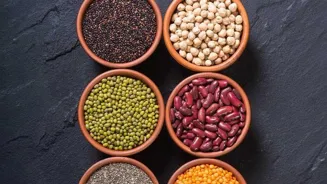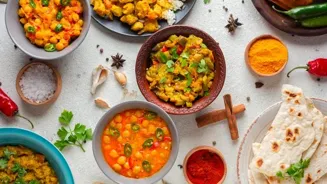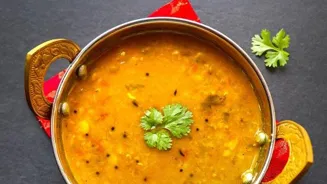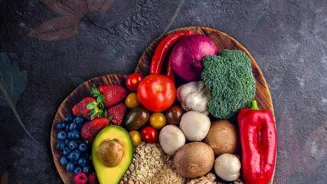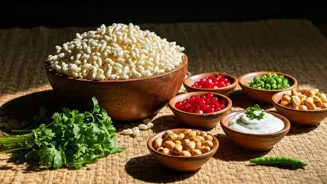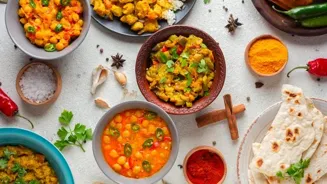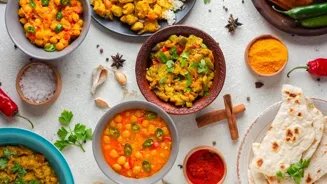Unlock the world of Indian lentils! Discover the perfect dal for your dish in this comprehensive guide
Lentils, or dals as we fondly call them in India, are a staple in most Indian kitchens. From a comforting
bowl of dal chawal to crispy dosas and savory snacks, dals are incredibly versatile and a powerhouse of nutrition.
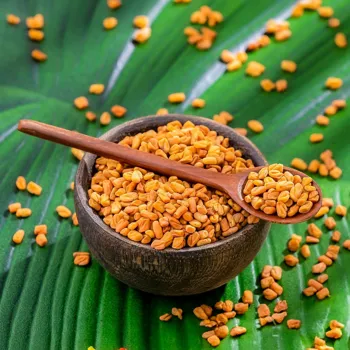
But with so many varieties available, choosing the right lentil for your recipe can sometimes feel a bit daunting. Fear not! This comprehensive guide will help you navigate the world of dals and unlock their full potential in your cooking.
Various dals differ in color, size, and use in dishes
First, let's understand the basics. Dals are broadly categorized based on their color, size, and whether they are whole (sabut) or split (dhuli). Each type has a unique flavor, texture, and cooking time. Common varieties include toor dal (arhar dal), urad dal, moong dal, chana dal, and masoor dal.
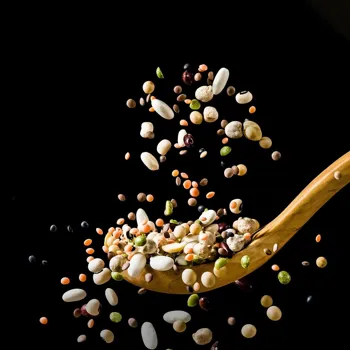
Toor dal, for instance, is a yellow lentil commonly used in sambar and dal tadka. Urad dal, both whole and split, is essential for idlis, dosas, and dal makhani. Moong dal, being light and easily digestible, is a favorite for khichdi and soups.
Chana dal, with its nutty flavor, finds its place in dals, snacks like chana dal namkeen, and even sweets. Masoor dal, known for its quick cooking time, is perfect for a speedy and flavorful dal.
Understanding these basic differences is the first step towards choosing the right dal for your desired dish.
Toor dal's versatility in Indian cuisine and cooking tips
Now, let's delve into specific dals and their ideal uses. Toor dal, also known as arhar dal, is perhaps one of the most common dals in Indian cuisine. Its slightly sweet and nutty flavor makes it a perfect base for many dal preparations.
When choosing toor dal, look for a bright yellow color and uniform size. Avoid dals that appear dull or have broken pieces, as these may be old. For sambar, toor dal lends a characteristic tanginess. In dal tadka, it provides a creamy and comforting texture.
Pro tip: Soaking toor dal for about an hour before cooking can reduce cooking time and improve digestibility. Remember, you can also combine toor dal with other dals like masoor or moong for a unique flavor profile. Experiment and find your favorite blend!
Urad dal: versatile Indian ingredient for dal, idlis, and papad
Urad dal is another essential ingredient in the Indian pantry. Available in both whole (black gram) and split (white gram) forms, urad dal plays a crucial role in South Indian cuisine.
Whole urad dal is used to make dal makhani, where it is slow-cooked with butter and cream for a rich and decadent dish. Split urad dal, on the other hand, is a key ingredient in idli and dosa batter. When buying urad dal, check for a clean and unblemished appearance.
For idlis and dosas, the quality of urad dal directly impacts the fluffiness and texture of the final product. Soaking urad dal overnight is essential for proper fermentation, resulting in soft and spongy idlis.
A lesser known fact is that urad dal is also used to make papad, a crispy and thin wafer that is often served as an accompaniment to meals.
Moong dal: light, versatile, nutritious, and easy to digest
Moong dal is prized for its light and easily digestible nature. It is a popular choice for khichdi, a simple and nutritious one-pot meal that is often recommended for babies and those recovering from illness. Moong dal is available in both whole (green gram) and split (yellow gram) forms.
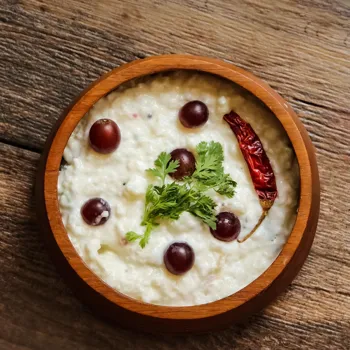
Split moong dal cooks quickly and has a mild flavor, making it versatile for both sweet and savory dishes. Whole moong dal takes longer to cook but offers a slightly more robust flavor. When selecting moong dal, look for a bright and even color. Avoid dals with a musty smell or discoloration.
Moong dal is also a great source of protein and fiber, making it a healthy addition to your diet. You can sprout moong dal and use it in salads or stir-fries for an extra boost of nutrition.
Chana dal: versatile legume in Indian cuisine for dals, snacks, and sweets
Chana dal, with its nutty and earthy flavor, is a versatile ingredient in Indian cuisine. It is made from split chickpeas and is commonly used in dals, snacks, and sweets. Chana dal is often used to make dal fry, a flavorful and aromatic dal that is tempered with spices.
It is also a key ingredient in chana dal namkeen, a crispy and savory snack. In South India, chana dal is used in vada batter to add a crunchy texture. When buying chana dal, look for a uniform size and a bright yellow color. Avoid dals that are broken or have a dull appearance.
Soaking chana dal for at least a few hours before cooking helps to soften it and reduce cooking time. You can also grind soaked chana dal into a paste and use it to make delicious and healthy veggie burgers or cutlets.
Masoor dal: quick-cooking red lentils, rich in protein and iron, versatile in recipes
Masoor dal, also known as red lentils, is known for its quick cooking time and mild flavor. It is a great option for a quick and easy dal when you are short on time. Masoor dal is available in both whole and split forms. Split masoor dal cooks the fastest and is the most commonly used variety.
When buying masoor dal, look for a bright red color and avoid dals that are broken or have a dull appearance. Masoor dal is a good source of protein, fiber, and iron. It can be used to make a simple and flavorful dal, or it can be added to soups and stews for added nutrition.
Masoor dal is also a popular ingredient in Middle Eastern cuisine, where it is used to make lentil soup.
Choosing the right lentil for Indian recipes is key to creating signature dal dishes
Ultimately, choosing the right lentil for your Indian recipes is a matter of understanding their individual characteristics and how they complement the desired outcome of your dish.
Don't be afraid to experiment with different combinations and cooking methods to discover your own signature dal recipes. Happy cooking!
